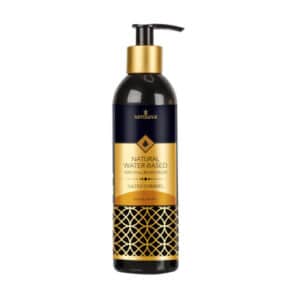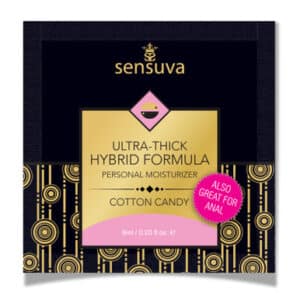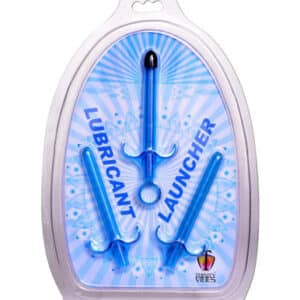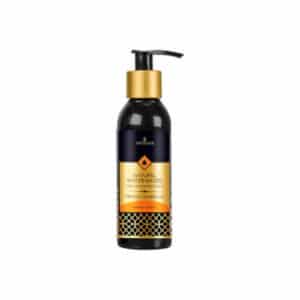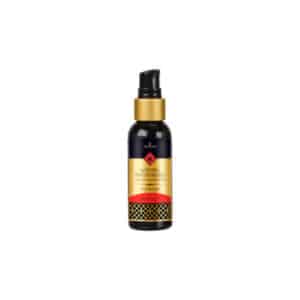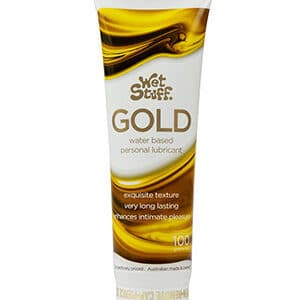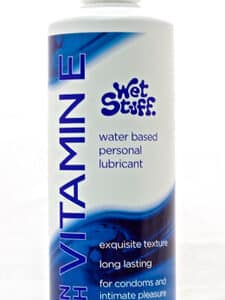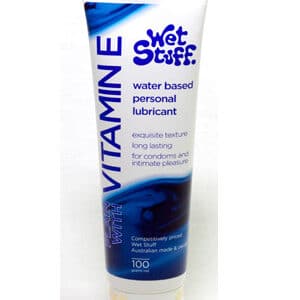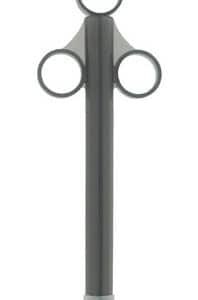Lubricants and Enhancers
Navigating the world of personal lubricants can be tricky especially when considering compatibility with different toys materials and intimate activities. Understanding which lubricant works best for your specific needs isn’t just about enhancing pleasure—it’s about protecting your sexual health and prolonging the life of your intimate accessories.
Whether you’re exploring new sensations or maintaining your favourite pleasure products choosing the right lubricant requires careful consideration. Different materials like silicone latex and rubber react differently with various lubricant bases meaning what works perfectly for one toy might potentially damage another. This comprehensive guide will walk you through essential compatibility insights helping you make informed decisions that keep your intimate experiences safe pleasurable and worry-free.
At Love Play we’re committed to supporting your sexual wellness journey with scientifically-backed advice and high-quality products that prioritise your comfort and enjoyment. Let’s dive into the essential world of lubricant compatibility.
-
Butter Rum – Enhance Your Intimacy with Luxury and Comfort
$49.95 Add to cartExperience the ultimate in intimate pleasure with Butter Rum, designed to bring luxury and comfort to your most personal moments. This high-quality product is crafted for sophistication and tailored for your comfort, ensuring a truly empowering experience.
Key Features:
– Luxurious Texture: Smooth, velvety texture for enhanced comfort and pleasure.
– Phthalate-Free Formula: Safe and non-irritating, ensuring a worry-free experience.
– Discreet Packaging: Private and unobtrusive packaging to respect your privacy.
– Vegan-Friendly: Compatible with all types of skin, including sensitive skin.
– Easily Absorbable: Quick absorption leaves no residue or stains. -
Caramel – Sophisticated Sensual Lubricant
$59.95 Add to cartElevate your intimate moments with Caramel, a premium sensual lubricant designed to enhance pleasure and comfort. Crafted with high-quality ingredients, this luxurious lubricant is perfect for solo or partnered play, ensuring a smooth and enjoyable experience every time. Discover new dimensions of intimacy tailored just for you.
- Long-lasting and silky smooth texture for extended pleasure
- High-quality, body-safe ingredients to ensure maximum comfort and safety
- Convenient pump dispenser for easy application
- Discreet packaging to protect your privacy
- Suitable for all skin types and compatible with various toys and materials
-
Cotton Candy: Enhance Your Intimate Moments with Discreet Sensation
$24.95 Add to cartExperience the soothing comfort and sensual delight of our Cotton Candy, designed to heighten your intimate moments. Crafted for discretion and ease of use, this product is perfect for enhancing your connection and personal satisfaction.
- Soft, Gentle Texture: Designed for maximum comfort and pleasure.
- Discreet Design: Compact size for easy storage and travel.
- User-Friendly: Easy to use with step-by-step instructions included.
- Hygienic Material: Made from body-safe, non-toxic materials for peace of mind.
- Enhanced Sensation: Elevates intimacy with unique textural experience.
-
Lubricant Launcher 3 Pack
$34.95 Add to cartElevate your intimate moments with the Lubricant Launcher 3 Pack, designed to simplify and enhance your experience. This discreet and easy-to-use set ensures you’re always prepared, fostering a deeper connection and comfort in your relationships.
-
- <liFAILURE presidencyasts discretion: Designed for private use with minimal noise and compact design.
<liConvenient Multipack: Includes three lubricant launchers for extended use and convenience.
<liEasy to Clean: Made from high-quality materials that are easy to clean and maintain.
<liUniversal Compatibility: Works with a variety of lubricants, giving you the flexibility you need.
<liCompact & Portable: Perfect for on-the-go, fitting seamlessly into any bag or drawer.
-
-
Natya Water-Based Lubricant Kit – Enhance Your Intimacy with Comfort and Discretion
$299.95 Add to cartExperience seamless intimacy with the Natya Water-Based Lubricant Kit, designed to enhance comfort and discretion. This premium kit is perfect for individuals and couples looking to elevate their intimate experiences.
– Water-Based Formula: Hypoallergenic and gentle on skin, compatible with all sex toys.
– Long-Lasting Lubrication: Provides extended playtime without the need for constant reapplication.
– Easy to Clean Up: Quickly washes off with water, leaving no residue behind.
– Phthalate-Free and Non-Toxic: Ensures safety and peace of mind during use.
– Discreet Packaging: Unmarked packaging for complete privacy and confidentiality. -
Orange Natural Water-Based Personal Moisturiser
$39.95 Add to cartEnhance your intimate moments with the Orange Natural Water-Based Personal Moisturiser, crafted to provide long-lasting comfort and pleasure. This natural, non-greasy formula is perfect for solo or partnered play, ensuring a smooth and enjoyable experience. Embrace your intimacy with confidence and discretion.
- Natural Ingredients: Formulated with organic elements for a gentle, non-irritating experience.
- Long-Lasting Lubrication: Provides extended comfort without the need for frequent reapplication.
- Non-Greasy Texture: Easy to clean up and leaves no residue.
- Hypoallergenic: Suitable for sensitive skin types.
- Cruelty-Free & Vegan-Friendly: Aligns with your values of compassion and sustainability.
- Discreet Packaging: Ensures privacy and confidentiality in shipping and storage.
-
Strawberry – Enhancing Intimacy with Every Touch
$34.95 Add to cartExperience the ultimate in sensual pleasure with Strawberry, designed to elevate your intimate moments. This luxurious product combines innovative features and thoughtful design to enhance your connection and personal growth.
Sleek, ergonomic design for comfortable use and intuitive handling
Advanced vibration technology with multiple speed settings
Discreet packaging and quiet operation for privacy
Eco-friendly materials ensuring safety and sustainability
Rechargeable battery with extended use time -
Wet Stuff Gold Waterbased Lubricant 100G
Original price was: $25.99.$7.49Current price is: $7.49. Add to cartDiscover a smoother, more enjoyable intimacy experience with Wet Stuff Gold Waterbased Lubricant. This premium lubricant is designed to provide long-lasting comfort and enhance your intimate moments. Perfect for couples and individuals alike, it promotes healthy sexual well-being and deepens connections.
- Water-Based Formula: Non-greasy, easy to clean up, and safe for all types of intimate play.
- Long-Lasting Comfort: Provides sustained lubrication for extended enjoyment.
- Body-Friendly Ingredients: Hypoallergenic and fragrance-free to minimize irritation.
- Discreet Packaging: Unmarked packaging ensures your privacy.
- Couples and Solo Use: Suitable for both couples and solo play, enhancing intimacy in all scenarios.
-
Wet Stuff Vitamin E 550G Pump
$59.95 Add to cartEnhance your intimate moments with the Wet Stuff Vitamin E 550G Pump, a luxurious and nourishing lubricant designed to provide long-lasting hydration and comfort. Infused with Vitamin E, this premium lubricant supports skin health and adds an extra layer of pleasure to your love play.
Generous 550g capacity for extended use
Rich in Vitamin E to nourish and moisturize the skin
Easy-to-use pump dispenser for convenient application
Non-greasy, water-soluble formula for effortless cleanup
Suitable for all skin types and compatible with condoms -
Wet Stuff W Vitamin E 100G
$24.95 Add to cartEnhance your intimate moments with Wet Stuff W Vitamin E, a premium lubricant designed to provide long-lasting comfort and hydration. Rich in Vitamin E, this luxurious formula supports skin health while offering a smooth, silky texture that enhances pleasure.
- Rich in Vitamin E for skin health and hydration
- Long-lasting, non-greasy formula for extended comfort
- Hydrating and soothing properties to enhance pleasure
- Silky smooth texture for optimal intimacy
- Water-soluble and easy to clean up
- Perfect for solo or couple’s play; suitable for all skin types
-
Xl Lubricant Launcher: Enhance Your Intimacy with Precision and Comfort
$29.95 Add to cartDiscover the ultimate in lubricant delivery with the XL Lubricant Launcher. Designed to enhance your intimate moments, this innovative tool provides precise application and effortless use. Empower your relationships with comfort and discretion.
- Precise Application: Accurately dispense lubricant exactly where you need it.
- Durable Construction: Made from high-quality materials for long-lasting performance.
- Discreet Packaging: Comes in unmarked packaging to ensure your privacy.
- Easy Cleaning: Simple and quick to clean, ensuring hygiene and convenience.
Understanding Lubricant Compatibility Basics
Lubricant compatibility represents a crucial technical consideration for maintaining equipment performance and preventing potential mechanical failures. Proper understanding of lubricant interactions ensures optimal machinery reliability and extended operational lifespan.
Chemical Composition and Interactions
Lubricants consist of complex chemical systems comprising base oils, thickeners, and performance-enhancing additives. Each component plays a critical role in determining overall compatibility and functional effectiveness.
Base Oil Interactions
Base oils demonstrate varying compatibility characteristics based on their chemical structure:
| Base Oil Type | Compatibility Characteristics | Potential Interaction Risks |
|---|---|---|
| Synthetic Hydrocarbon (PAO) | High thermal stability | Limited mixing with polar base oils |
| Mineral Oils | Broad application range | Potential performance degradation |
| Synthetic Esters | Enhanced lubrication properties | Chemical reactivity with certain additives |
Thickener Compatibility
Different thickener technologies impact lubricant mixing potential:
- Lithium-based thickeners exhibit moderate compatibility
- Calcium thickeners demonstrate unique chemical interaction profiles
- Polyurea thickeners provide specialized performance characteristics
Key Factors Affecting Lubricant Compatibility
Lubricant compatibility depends on multiple interconnected variables:
- Chemical Composition
- Molecular structure
- Additive package complexity
- Base oil polarity
- Physical Properties
- Viscosity ranges
- Temperature sensitivity
- Oxidation resistance
- Application Environment
- Operational temperature
- Mechanical stress levels
- Contamination potential
- Performance Metrics
- Lubrication effectiveness
- Mechanical stability
- Long-term reliability indicators
Systematic evaluation of these factors enables precise lubricant selection and minimises potential performance degradation risks.
Material Compatibility Assessment
Material compatibility represents a critical evaluation process for lubricants across diverse applications. Understanding the interactions between lubricants and different materials ensures optimal performance and prevents potential system degradation.
Elastomer and Seal Compatibility
Elastomers and seals demand meticulous compatibility assessments to prevent mechanical failures. Key compatibility considerations include:
Compatibility Testing Protocols
- ASTM Standard Evaluations: Implement standardised testing methods for comprehensive elastomer-lubricant interactions
- Chemical Reactivity Assessment: Analyze potential chemical transformations between lubricant components and elastomer materials
- Performance Degradation Metrics: Measure swelling percentages hardness changes and structural integrity variations
Critical Interaction Mechanisms
- Chemical Breakdown Patterns: Identify specific additive interactions causing elastomer deterioration
- Thermal Stability Factors: Evaluate temperature-related material transformation risks
- Stress Resistance Parameters: Determine long-term mechanical performance under lubricant exposure
Metal Surface Interactions
Metal surface compatibility involves complex chemical and physical interactions between lubricants and metallic substrates.
Corrosion Prevention Strategies
- Protective Additive Technologies: Deploy rust inhibitors and anti-corrosion compounds
- Surface Treatment Compatibility: Assess lubricant interactions with pre-treated metal surfaces
- Electrochemical Stability Analysis: Measure potential galvanic corrosion risks
Performance Enhancement Techniques
- Friction Reduction Mechanisms: Evaluate lubricant film formation characteristics
- Surface Adhesion Properties: Analyze molecular bonding between lubricant and metal interfaces
- Wear Protection Metrics: Quantify protection against mechanical abrasion
Plastic and Composite Material Considerations
Plastic and composite materials present unique compatibility challenges requiring sophisticated assessment techniques.
Material Interaction Dynamics
- Chemical Solubility Assessments: Identify potential solvent-based material degradation
- Stress Cracking Evaluations: Measure long-term structural integrity under lubricant exposure
- Thermal Deformation Analysis: Determine temperature-related material transformation risks
- Material-Specific Lubricant Selection: Match lubricant properties with specific polymer characteristics
- Performance Monitoring Protocols: Implement systematic compatibility tracking methods
- Molecular Interaction Mapping: Understand complex chemical engagement mechanisms
Lubricant Compatibility Testing Methods
Lubricant compatibility testing ensures optimal performance and prevents potential mechanical failures. Advanced evaluation techniques help manufacturers and engineers assess the interactions between different lubricant compositions.
Laboratory Evaluation Techniques
Comprehensive laboratory testing involves multiple sophisticated methodologies:
- Chemical Composition Analysis
- Spectroscopic examinations identify molecular interactions
- Infrared spectroscopy detects chemical bond changes
- Mass spectrometry reveals precise molecular structural modifications
- Physical Property Assessment
- Viscosity measurements compare lubricant flow characteristics
- Thermal stability tests examine temperature resistance
- Penetration depth evaluations determine structural integrity
- Microscopic Interaction Studies
- Electron microscopy reveals surface interaction patterns
- Atomic force microscopy investigates molecular-level compatibility
- Scanning electron microscopy analyses material interface reactions
- Compatibility Verification
- Blend multiple lubricant samples
- Monitor phase separation indicators
- Record chemical interaction responses
- Mechanical Stress Testing
- Simulate extreme operational conditions
- Measure lubricant performance under mechanical strain
- Document degradation mechanisms
- Long-Term Stability Assessments
- Conduct accelerated aging experiments
- Track chemical composition changes
- Evaluate performance consistency over extended periods
Common Compatibility Challenges
Lubricant compatibility presents complex technical challenges that arise from intricate chemical interactions between different lubricant components. Understanding these challenges helps prevent performance degradation and potential equipment damage.
Cross-Contamination Risks
Cross-contamination occurs when different lubricant types mix unexpectedly, creating significant performance risks. Key cross-contamination scenarios include:
- Viscosity Disruption: Mixing lubricants with disparate viscosity ratings can cause unpredictable film strength reductions
- Additive Interference: Conflicting chemical additives generate rapid performance deterioration
- Contamination Pathways: External particles accelerate lubricant breakdown during inadvertent mixing
Temperature and Pressure Effects
Lubricant compatibility dramatically shifts under varying environmental conditions. Critical temperature and pressure interactions include:
| Condition | Potential Compatibility Impact |
|---|---|
| High Temperature | Accelerated chemical decomposition |
| Low Temperature | Viscosity modifications |
| High Pressure | Molecular structure alterations |
| Rapid Pressure Changes | Potential lubricant film instability |
- Oxidation Processes: Oxygen interactions trigger molecular structure modifications
- Thermal Decomposition: Excessive heat causes lubricant component breakdown
- Radical Formation: Chemical interactions generate unstable molecular fragments
- Contaminant-Induced Reactions: External particle introduction accelerates degradation pathways
Best Practices for Lubricant Selection
Selecting the right lubricant demands careful consideration of multiple technical factors. Your lubricant choice directly impacts equipment performance and long-term functionality.
Compatibility Matrix Development
Developing a comprehensive compatibility matrix involves systematic evaluation of critical parameters:
| Parameter | Assessment Criteria | Importance Level |
|---|---|---|
| Thickener Type | Chemical composition | High |
| Base Oil Viscosity | Performance range | Medium |
| Additive Packages | Interaction potential | High |
| Temperature Range | Operational stability | Critical |
Key strategies for matrix development include:
- Categorising lubricants by chemical structure
- Mapping potential interaction risks
- Documenting cross-contamination scenarios
- Establishing clear compatibility boundaries
Preventive Maintenance Strategies
Preventive maintenance requires proactive lubricant management:
- Implement regular lubricant analysis protocols
- Monitor chemical composition changes
- Track performance degradation indicators
- Establish clean storage and handling procedures
Critical maintenance steps:
- Conduct periodic lubricant compatibility tests
- Document interchange limitations
- Create clear replacement guidelines
- Train personnel on proper lubricant selection techniques
- Chemical composition analysis
- Physical property assessments
- Performance consistency checks
- Long-term stability evaluations
Industry-Specific Compatibility Guidelines
Lubricant compatibility varies significantly across different industrial sectors, with each domain presenting unique technical challenges and specific requirements. Understanding these nuanced compatibility guidelines helps prevent equipment damage and optimize performance.
Automotive Lubricant Compatibility
Automotive lubricant compatibility demands precise chemical and performance matching to ensure vehicle component longevity. Key considerations include:
Grease Interaction Dynamics
- Lithium-based greases cannot mix with marine or certain polyurea greases
- Incompatible grease combinations lead to:
- Mechanical seal degradation
- Reduced lubrication effectiveness
- Accelerated component wear
Performance Specification Matching
- Identical performance standards (GC/LB and NLGI#2) do not guarantee direct compatibility
- Vehicle manufacturers specify exact lubricant brands and product numbers
- Critical verification steps prevent potential mechanical failures
Critical Application Zones
- High-load environments require meticulous compatibility assessment
- Wheel bearings and loaded shaft bearings demand precise lubricant selection
- Compatibility testing prevents premature component failure
Industrial Machinery Recommendations
Industrial machinery lubricant compatibility involves comprehensive material and performance evaluations:
Material Interaction Analysis
- Assess chemical interactions between lubricant and machinery components
- Evaluate potential corrosion risks
- Determine thermal stability under operational conditions
Contamination Prevention Protocols
- Implement strict lubricant cross-contamination prevention measures
- Develop systematic lubricant tracking mechanisms
- Establish clear lubricant replacement guidelines
Aerospace and Precision Engineering Requirements
Extreme Environment Performance
- Evaluate lubricant stability across temperature ranges from -50°C to 200°C
- Assess performance under high-pressure and low-pressure environments
- Verify chemical inertness in critical mechanical interfaces
- Meet stringent aerospace engineering standards
- Conduct comprehensive compatibility testing
- Document detailed performance characteristics
Emerging Trends in Lubricant Compatibility
The lubricant industry continues to evolve with groundbreaking technological advancements. These emerging trends are reshaping how engineers and manufacturers approach lubricant performance and compatibility challenges.
Advanced Synthetic Lubricant Technologies
Synthetic lubricant technologies are revolutionising performance capabilities across multiple industries. Key developments include:
- Nano-engineered lubricant formulations providing enhanced molecular-level interactions
- Adaptive polymer structures that adjust viscosity dynamically
- Targeted molecular designs reducing friction by up to 40%
- Self-healing lubricant compositions that repair microscopic surface damage
Performance metrics for advanced synthetic lubricants demonstrate significant improvements:
| Technology | Friction Reduction | Temperature Range | Longevity Increase |
|---|---|---|---|
| Nano-engineered | 35-42% | -40°C to 250°C | 3-5x standard lubricants |
| Adaptive Polymers | 30-38% | -30°C to 220°C | 2-4x standard lubricants |
| Self-healing Compositions | 25-35% | -20°C to 200°C | 2-3x standard lubricants |
Sustainable Lubricant Formations
Sustainable lubricant technologies are addressing environmental concerns through innovative approaches:
- Bio-based lubricant compositions derived from renewable plant sources
- Biodegradable formulations reducing ecological impact
- Circular economy design enabling lubricant regeneration
- Lower carbon footprint manufacturing processes
Sustainable lubricant developments showcase promising environmental performance:
| Sustainable Attribute | Performance Metric | Ecological Impact |
|---|---|---|
| Plant-based Origin | 80% renewable content | Reduced petroleum dependency |
| Biodegradability | >90% decomposition | Minimised environmental contamination |
| Carbon Footprint | 60-75% reduction | Significant emissions decrease |
These emerging trends demonstrate the lubricant industry's commitment to advanced technological solutions and environmental responsibility.
Conclusion
Understanding lubricant compatibility isn't just technical knowledge - it's a critical skill that empowers you to make informed decisions. Whether you're selecting intimate products or managing industrial machinery your approach to lubrication can significantly impact performance and longevity.
By prioritising comprehensive compatibility assessments you'll protect your equipment reduce maintenance costs and ensure optimal functionality. The key is staying informed about emerging technologies and adopting a proactive approach to lubricant selection.
Remember that compatibility testing isn't a one-time task but an ongoing process. Keep learning stay adaptable and always prioritise quality when choosing lubricants across any application.
Frequently Asked Questions
What is lubricant compatibility?
Lubricant compatibility refers to the ability of different lubricants to mix and interact without causing degradation in performance or causing chemical reactions that could damage equipment. It involves assessing how various lubricant compositions, base oils, and additives can work together effectively without compromising their fundamental properties or causing mechanical failures.
Why is lubricant compatibility important?
Lubricant compatibility is crucial for maintaining optimal performance, preventing mechanical failures, and extending the lifespan of equipment. Incompatible lubricants can cause chemical reactions, viscosity changes, additive interference, and potential damage to materials. Proper compatibility ensures smooth operation, reduces wear and tear, and maintains the integrity of mechanical systems across various industries.
How do you test lubricant compatibility?
Lubricant compatibility is tested through multiple advanced methods, including spectroscopic chemical analysis, viscosity measurements, thermal stability tests, and microscopic interaction studies. Professionals conduct laboratory evaluations, mechanical stress testing, and accelerated aging experiments to verify compatibility. These comprehensive assessments help identify potential interactions, performance risks, and long-term stability of lubricant combinations.
What factors affect lubricant compatibility?
Several key factors influence lubricant compatibility, including chemical composition, base oil types, additive packages, thickener technologies, temperature ranges, and environmental conditions. Physical properties like viscosity, molecular structure, and performance metrics also play critical roles. Understanding these factors helps in creating a comprehensive compatibility matrix for precise lubricant selection.
Can different lubricant types be mixed?
Mixing different lubricant types is generally not recommended without thorough compatibility testing. Cross-contamination can lead to performance degradation, chemical reactions, and potential equipment damage. Each lubricant has unique chemical compositions that may not interact favorably. Always consult manufacturer guidelines and conduct professional compatibility assessments before attempting to mix lubricants.
What are the risks of incompatible lubricants?
Incompatible lubricants can cause significant risks, including reduced mechanical performance, accelerated equipment wear, chemical breakdown, viscosity changes, and potential system failures. Risks include corrosion, seal deterioration, increased friction, and compromised thermal stability. These issues can lead to costly repairs, decreased equipment efficiency, and potential safety hazards.
How are lubricant compatibility challenges addressed?
Addressing lubricant compatibility challenges involves systematic approaches like comprehensive testing, developing compatibility matrices, regular lubricant analysis, and personnel training. Advanced techniques include spectroscopic examinations, mechanical stress testing, and evaluating interactions under various environmental conditions. Industry-specific guidelines and emerging technologies also help mitigate compatibility risks.
What emerging trends exist in lubricant compatibility?
Emerging trends include nano-engineered lubricant formulations, adaptive polymer structures, self-healing compositions, and sustainable bio-based solutions. These innovations focus on improving performance metrics, reducing friction, enhancing longevity, and developing environmentally responsible lubricant technologies. The industry is increasingly prioritising advanced compatibility testing and sustainable development.


